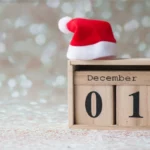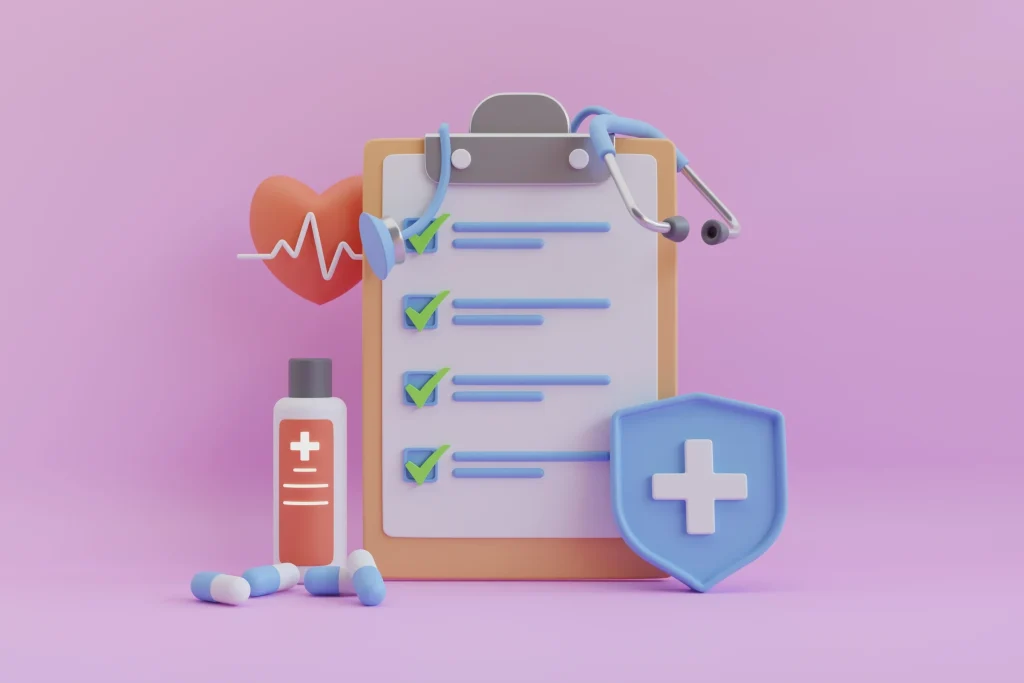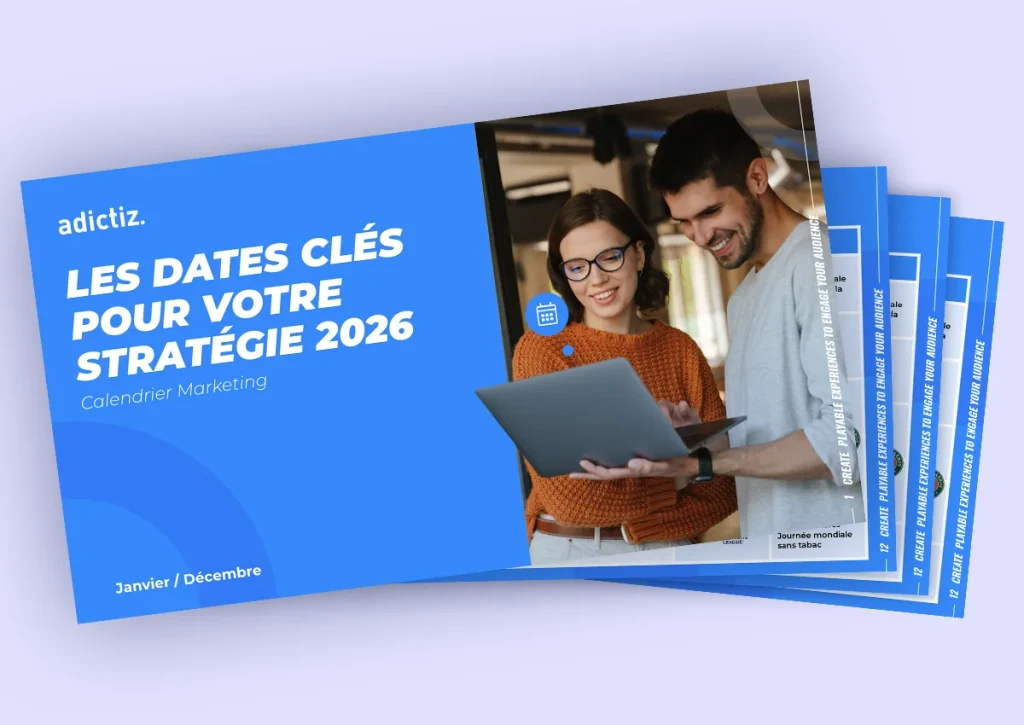La Saint Valentin n’est pas seulement la fête des amoureux. C’est aussi une fête commerciale qui est devenue une date incontournable du calendrier marketing des marques. D’après les derniers chiffres disponibles issus d’une étude YouGov, près de 185 millions d’euros avaient été dépensés lors de la fête des amoureux en France, soit une progression de 275% en 10 ans.
La Saint Valentin est d’ailleurs la 3e fête commerciale la plus importante en France, derrière Noël et Halloween. C’est donc l’occasion pour les marques de capitaliser sur les intentions d’achat des consommateurs en leur proposant des idées de cadeaux romantiques à offrir à leur moitié.
Pour se démarquer durant cette période particulièrement concurrentielle de l’année, votre entreprise peut miser sur un levier marketing redoutable : la gamification. En intégrant des mécaniques interactives dans votre campagne marketing de Saint Valentin, vous pourrez en effet mieux capter l’attention de votre audience et les inciter à acheter leur cadeau auprès de votre marque.
Dans cet article, nous vous partageons 3 exemples de campagnes gamifiées pour la Saint Valentin. Vous pourrez vous en inspirer pour dynamiser votre communication, engager plus efficacement votre public cible et booster vos ventes durant ce temps fort commercial.
What should you aim in for in a Vlantine’s Day marketing campaign
Even though it remains the ultimate romantic holiday, Valentine’s Day is also an opportunity for brands to promote their offerings. This commercial holiday serves as a prime showcase for businesses that sell potential gifts for couples in love.
Of course, we think of the traditional bouquets of flowers. Industry professionals expect over a million flowers to be sold for Valentine’s Day this year, with two-thirds being red rioses. However, florists are not the only merchants celebrating Valentine’s Day. Fashion, beauty, culture, dining… Many sectors are involved in Valentine’s Day marketing.
Don’t forget about singles, who are also targeted by brands during this key commercial period. On dating apps, the annual peak of activity tends to occur at the beginning of the year. Singles often make New Year’s resolutions, and apps like Happn see an increase of over 20% in their sign-ups during the month of February.
The main objective pursued by companies in their Valentine’s Day marketing is therefore to increase sales and revenue. The goal of the campaigns implemented is to raise consumer awareness of their offerings ans encourage them to buy their Valentine’s Day gifts in-store (physical or digital).
But beyond the conversion objective, brands can also design their Valentine’s Day campaigns around other strategic goals.
Increase brand awareness
Valentine’s Day is an opportunity to gain visibility with a new audience. The aim of the campaign will be to boost brand awareness among couples (or singles) by leveraging viral marketing strategies (such as marketing contests, influencers collaborations, or co-branding).
Engage your customer community
After a quiet January following the holiday season, the marketing calendar kicks off with a bang thanks to Valentine’s Day. Businesses can take advantage of this key period to engage their audience. The idea is to increase interactions with the brand, particularly through gamification mechanics.
Contests, for example, encourage users to be creative and allow businesses to generate user-generated content (UGC).
Collect data
Customer knowledge is also a significant aspect of Valentine’s Day marketing. Brands can leverage interactions with their audience to collect relevant data, particularly regarding product preferences, as well as opt-ins for their future communication campaigns. This information can be utilized throughout the year to better segment their clientele and send personalized content and offers.
Foster loyalty and strengthen brand attachment
En mettant en jeu des récompenses attractives sur le thème de l’amour (comme des séjours en amoureux, des coffrets cadeaux, etc.), les marques peuvent ainsi booster leur rétention client. Les jeux marketing peuvent être proposés en post-achat (pour encourager le rebuy) ou réservés aux membres du programme VIP, pour augmenter la fidélisation. En récompensant ses meilleurs clients, l’entreprise pourra ainsi renforcer l’attachement à la marque et sécuriser des revenus significatifs.
3 Examples of gamification marketing Campaigns for Valentine’s Day
To stand out from their competitors and boost the performance of their Valentine’s Day marketing strategy, an increasing number of companies are betting on gamification. Here are 3 inspiring campaigns to achieve commercial goals and engage their audience more effectively.
1. Electrolux: a Memory game to enrich their database during Valentine’s Day
On the occasion of Valentine’s Day, Electrolux launched a campaign aimed at enriching its database, specifically encouraging product registrations. Through an engaging game mechanic, Memory, the brand was able to collect opt-in very effectively while showcasing its Duos product range.
Electrolux’s campaign generated significant enthusiasm, showcasing an excellent engagement rate (31K users and an average of 2 minutes per game session) and very good results in lead qualification. This campaign allowed the brand to retarget and retain acquired leads, highlighting the ability of a gamification marketing campaign to create meaningful interactions while achieving notable results in qualification.
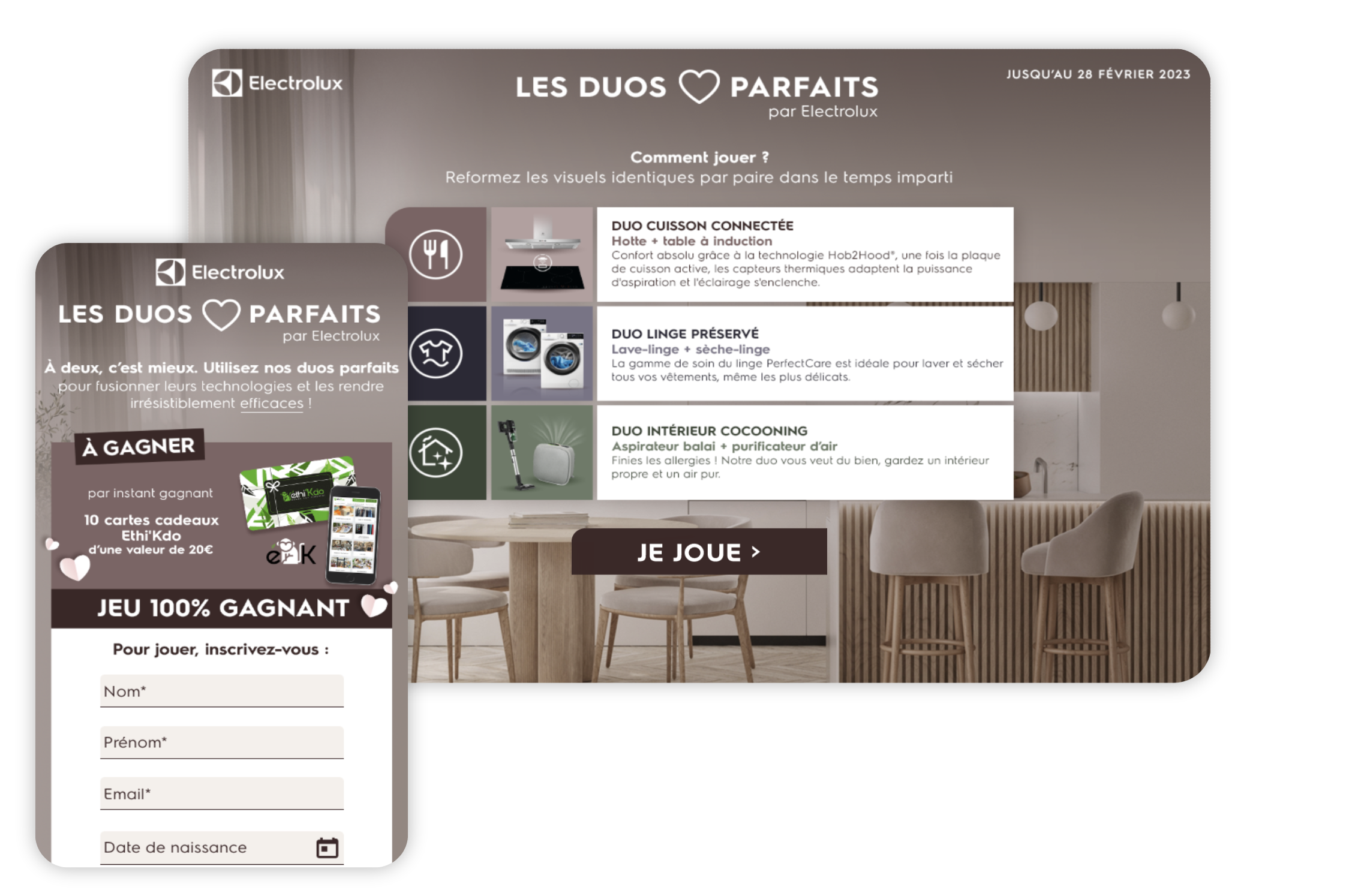
Del Arte: a Shooter game to generate new leads
As every year, the Del Arte brand celebrates lovers on Valentine’s Day. The interactive campaign invites participants to play a Shooter game. They are then redirected to an instant-win opportunity to win particularly attractive prizes for the target audience (gift vouchers, Interflora bouqets, trips to Paris, etc. )
The campaign primarily enabled the company to generate over 40k new sign-ups to its mailing list and opt-ins. These leads were then reactivated throughout the year through strategic marketing campaigns for the brand.
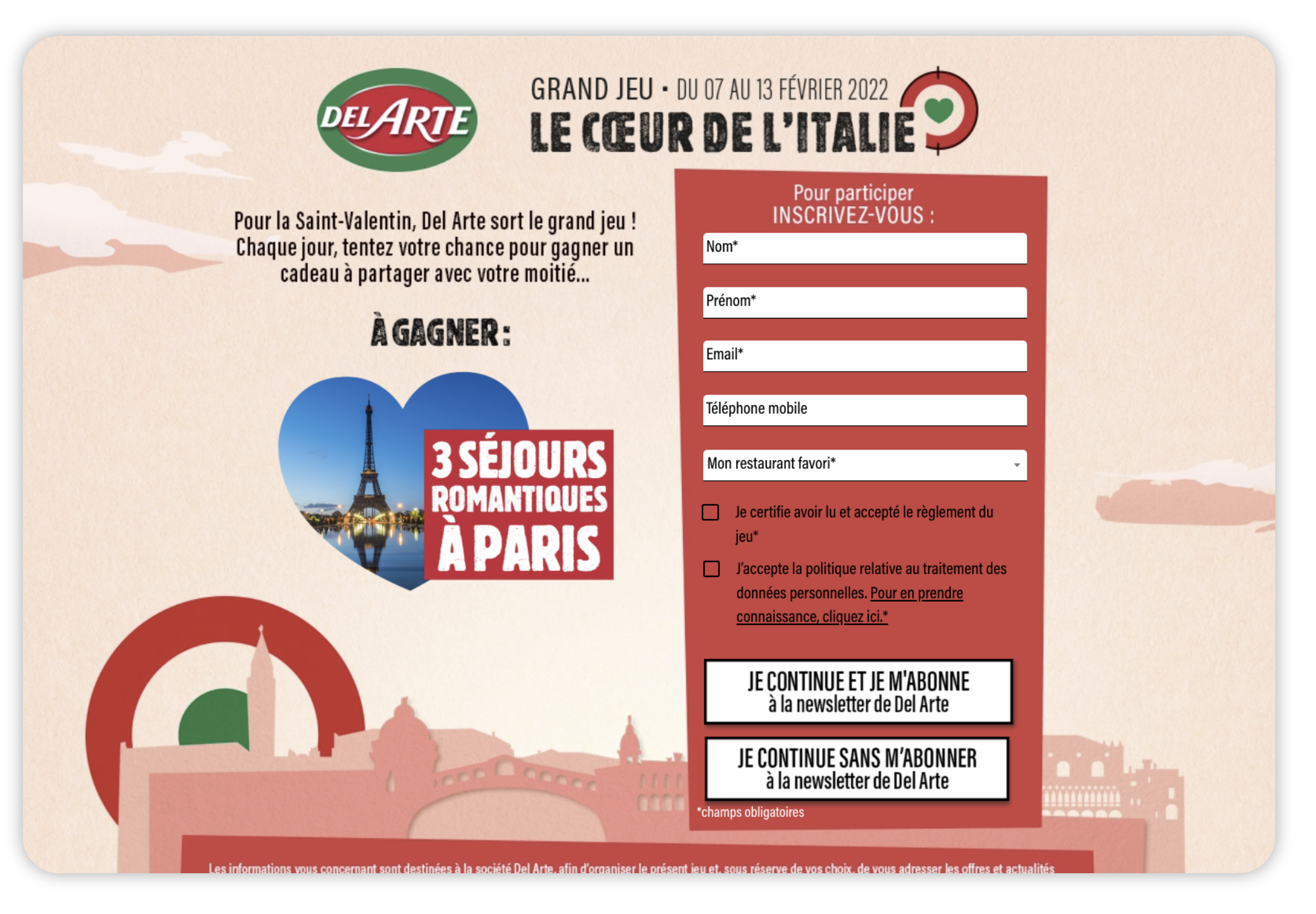
3. M&M’s: A shuffler game to boost Valentine’s Day sales
On the occasion of Valentine’s Day, My M&M’s launched a game to attract new customers by showcasing its product range. Users had to form all the pairs within a set time to access a Shuffler and immediately discover if they won their Valentine’s Day gift box. This highly engaging mechanic allowed M&M’s to generate 30k new leads.
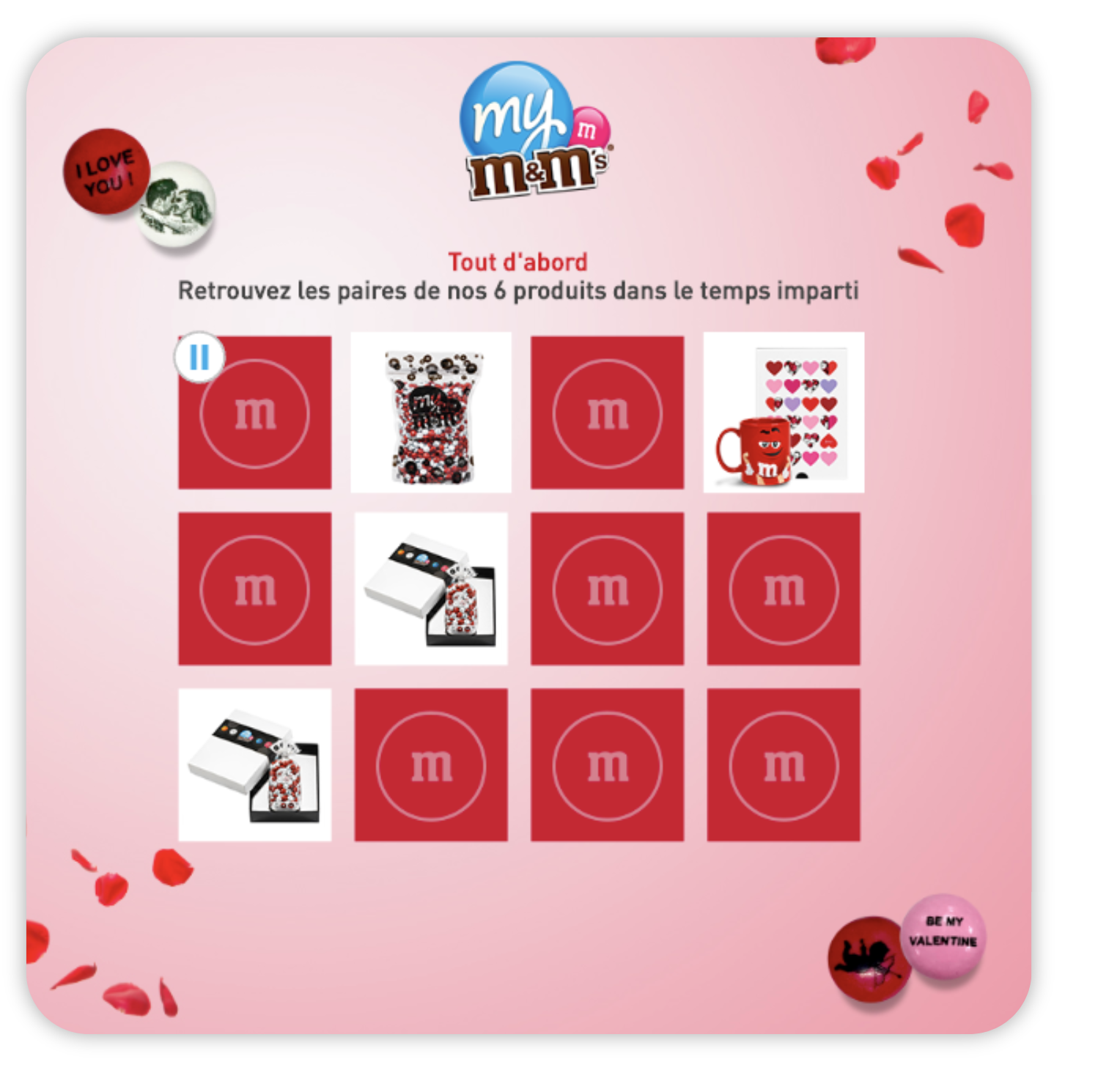
Conclusion
Consumers are particularly attentive to brand content around Valentine’s Day. Capitalize on their purchase intentions and engagement to achieve your strategic goals by launching a gamified marketing campaign. To enhance your communication and boost your results, all you need to do is customize one of our marketing game mechanics!



